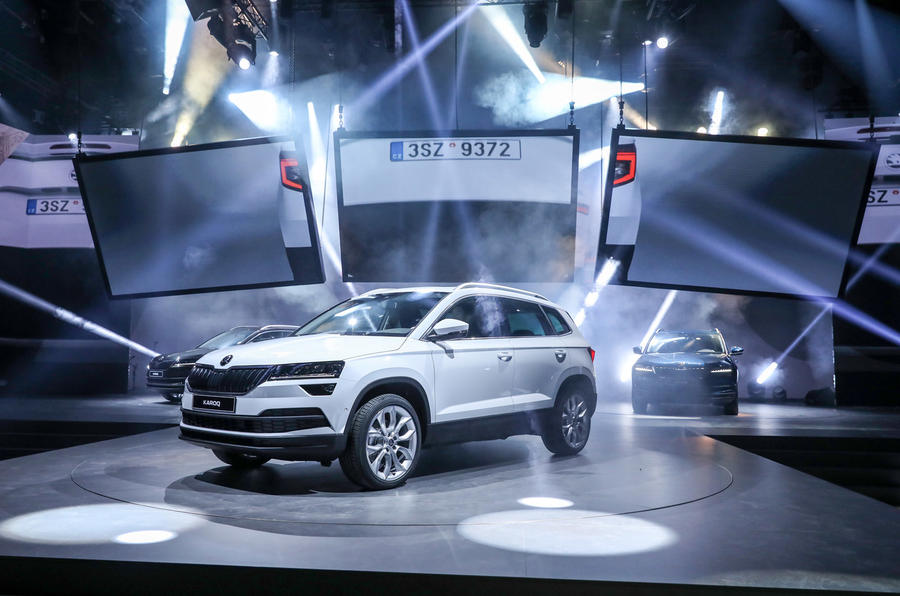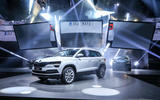The new Skoda Karoq compact SUV, which replaces the Skoda Yeti (2013-2017) in the Czech manufacturer’s line-up, will start from £20,875 when it goes on sale.
The Karoq is Skoda's challenger in Europe's fastest growing market segment, going up against the likes of the Nissan Qashqai. The entry-level price is more than £1500 higher than the Qashqai, although the Karoq gets 17in alloys, AEB, dual-zone climate control, LED rear lights, rear parking sensors and a driver fatigue monitor as standard. Sales for the car will begin on 3 October.
Just three specs will be available at launch: SE, SE L and Edition, while the range maxes out with the £31,690 2.0-litre TDI 4x4 with DSG. That's £840 less than the range-topping Qashqai. DSG is a £1300 option across the range.
Skoda predicts that the top-selling spec will be mid-range SE L, while the best-selling engine will be the 1.5-litre TSI. Virtual pedal - sensor-based boot opening, a Canton sound system upgrade and park assist are expected to be the most popular options, while the petrol-diesel split will be 65% in petrol's favour - similar to the Yeti.
The Karoq’s design – along with Skoda's Alaskan indigenous language-based SUV naming convention – is based on that of the recently launched Skoda Kodiaq. There will be a choice of five engines at launch, with four of those new to Skoda.
Skoda CEO Bernhard Maier said: "With the Karoq we are opening a new chapter in the success story of SUV at Skoda. The Yeti sold 100,000 cars per year, which was no less than 10% of global sales. We expect the Karoq to do more than that."
Opinion: why the Skoda Karoq has an identity problem
The Karoq is also available with a range of advanced driver assistance and infotainment options, and is the first Skoda to come with a digital instrument panel.






































































Join the debate
Add your comment
Ridiculous levels of car price inflation yet again
Another huge price hike accompanying a replacement model launch.....any interest I had in this car just flew out the window.
That lightweight Suzuki Vitara non-turbo 1.6 now looks a whole lot more tempting - especially without any complex VW bits to go wrong.
Autocar Please, please
Can you stop adding two line to the top of an old story & counting it as a new one, it is very confusing & often contradictory as you have no idea what is the new information compared to older perhaps speculation.
Can a link to the old story just be included below the new information for clarity (and also it will keep the number of comments in check!!!)
Skoda Karoq prices
Bit surprised that Skoda has pitched the Karoq's starting price £1500 above the market keader Qashqai,seems rather ambitious even more when the entry point for the Kodiaq is £22190 for a larger more capable car,when you can get a 4x4 2-0 litre petrol Kodiak for just over £26k makes me think that the Karoq could suffer the same fate as the Skoda Rapid which was priced too close to the Octavia which offered a lot more car for not much more money,
ianp55 wrote:
Platformwise the Karoq & Kodiaq are very similar so acceptable for similar pricing, however to me the difference between a Rapid & Octavia are much more significant.